Every January-February, I head to the big Mineral Show at Tucson Arizona in search of unique specimens for my minerals business and to meet other dealers, collectors friends and acquaintances. This past February, 2014, in a lull in activity at Tucson, I headed to Quartzite, Arizona to visit my friends Paul and Liz Wray. Paul and Liz live half of their time in Whitehorse, Yukon, where they operate the Yukon Rock Shop, just outside of Whitehorse. Paul also works, on a project basis, as a professional miner and supervisor on underground mining projects in the Yukon, when opportunities arise. Paul and Liz have a booth at the amazing Quartzite Show where they sell Yukon minerals and ores, slabbed rocks and related geological and mineralogical items. Drop by to visit them in either Quartzite or Whitehorse, if you are near?!
Paul has been wintering in Arizona for many years and knows his way around the desert, well. In particular, he knows some great old mining locations where it is possible to collect decent mineral specimens. I took Paul up on his offer to go collecting at the Planet Mine, way out in the Sonoran desert, NE of Quartzite. For a northern lad like me, the desert trip exposed me to a landscape, flora and secondary mineralization that I am not used to seeing! Here is a little bit about the trip. Remember to click on the images to look at an enlarged view!
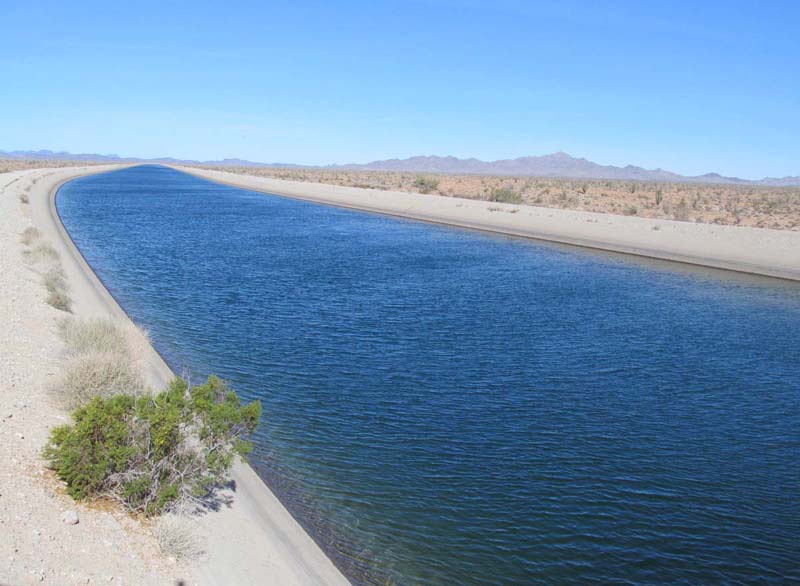
It struck me as odd that the first thing we encountered in our trip out into the bone-dry desert was a man-made river streaming irrigation water through the Sonoran Desert, on its way to California.

Our first stop on the way to the Planet Mine was the BBC Mine. It isn't much to look at but the BBC Mine is a copper project that didn't seem to really get off of the ground. There is an adit, and ore stock piles on a leach pad but it seems that the mineralization was never leached.
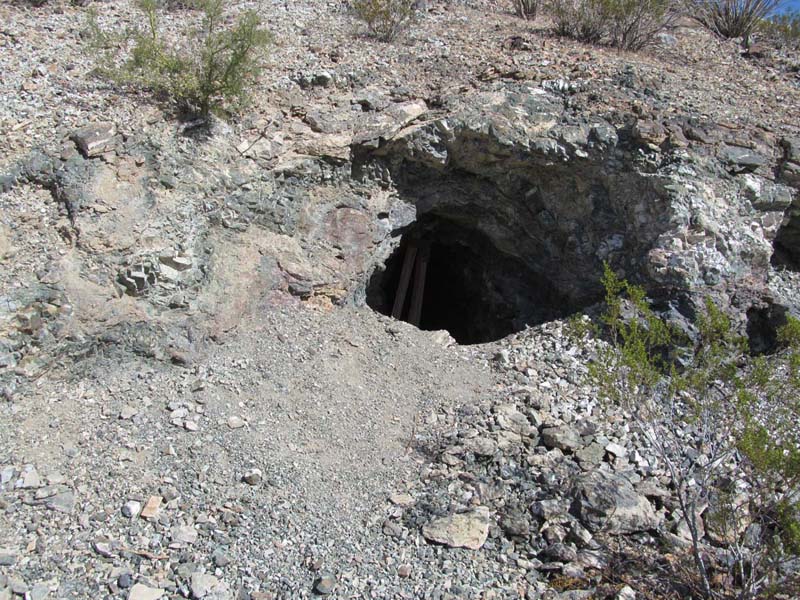
The adit is open with some timbers visible. We didn't venture inside since we had no lights of safety gear. It appears that the adit was driven on iron formation, laced with chrysocolla.
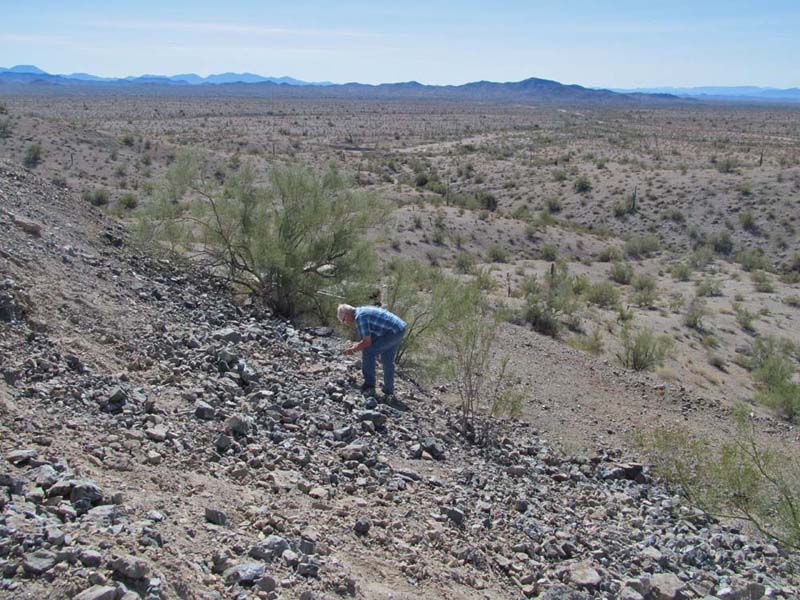
At this site, we collected some chrysocolla but the mineral that interested me the most were the coarse hematite crystals embedded in quartz and in cavities. I think that potential exists here to collect some excellent hematite crystals. Lots of quartz crystals too!
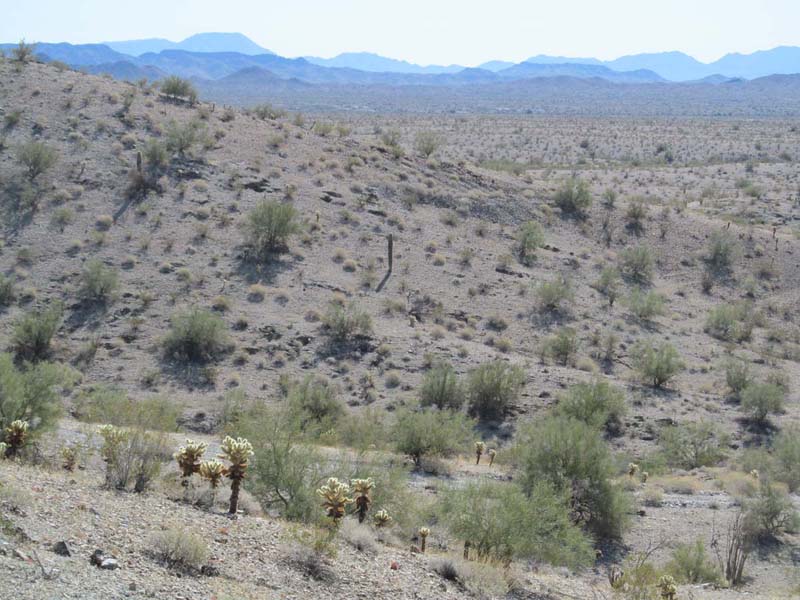
A magnificent view of the desert. Very quiet out there!
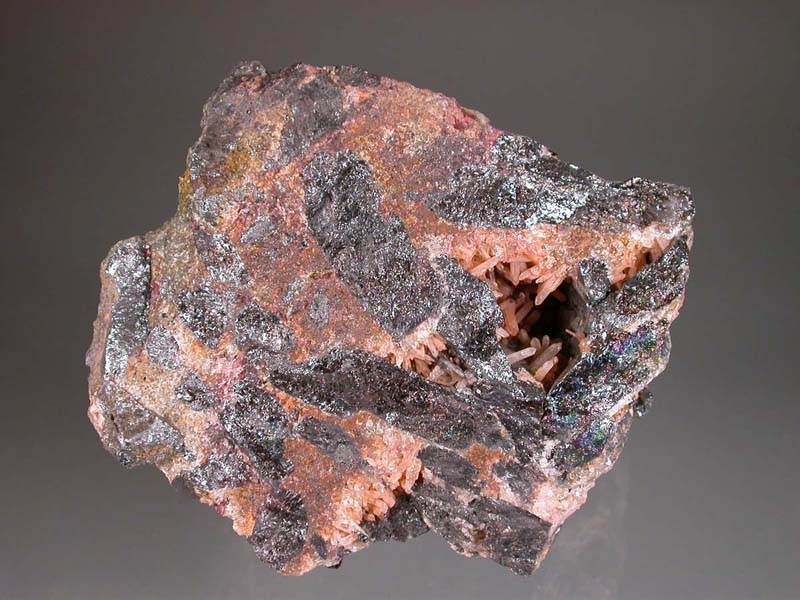
Here is a picture of the hematite in quartz that I was writing about earlier. 10.0cm across. Sometimes there are cavities with very good crystals.
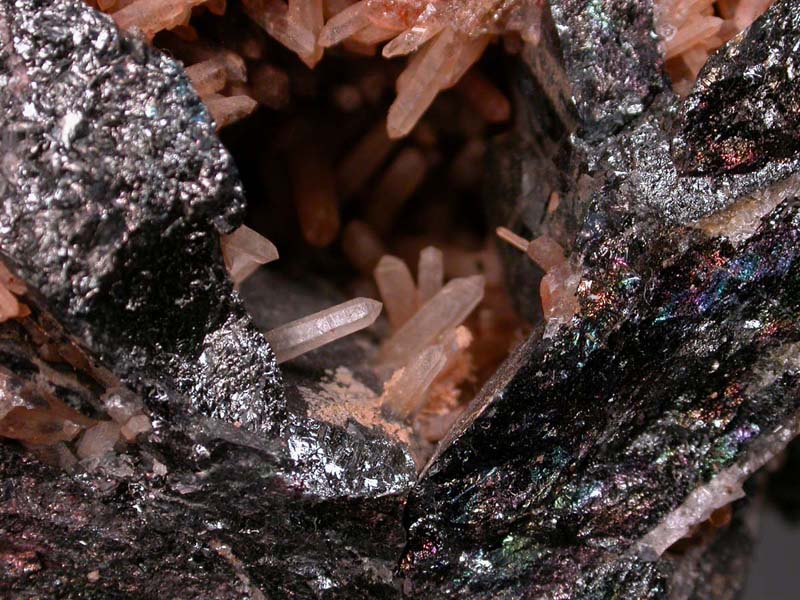
Here is a close-up of the vug. You can't really see them but there are very good hematite crystal faces on the right side. Worth going back to check out!
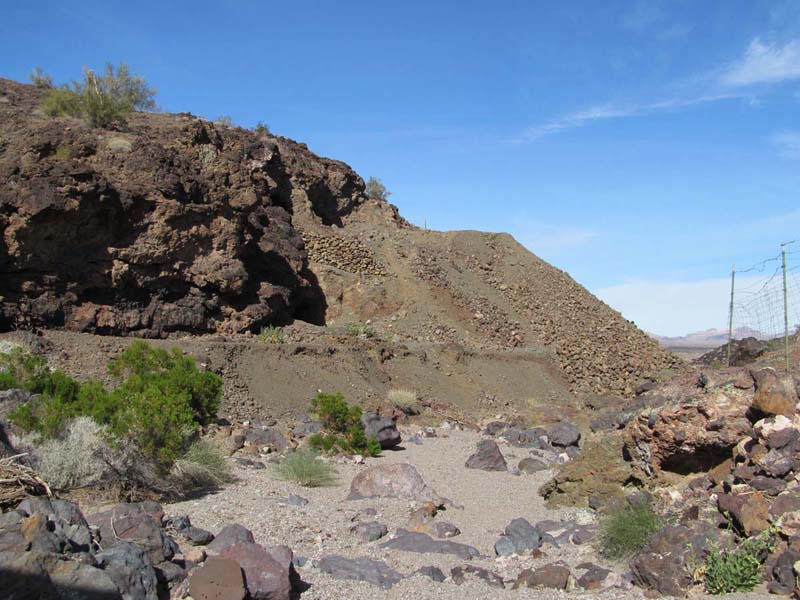
Here was the main destination of our drive in the desert, the Planet Mine. It is a former underground Cu-Fe-Ag-Au mine located about 57 miles north east of Quartzite, AZ. It was discovered in 1863 and straddles a tributary of the Williams River, which was bone dry during our visit. We parked at a location above the mine and walked down a wash to the mine workings and dumps.
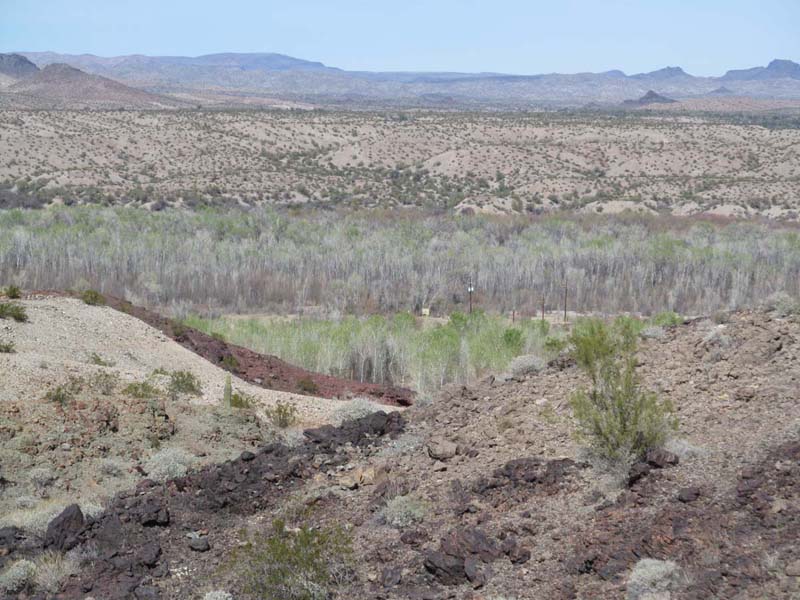
The mine is just uphill from the Planet Ranch. Here is a picture of the Valley. The ranch is just off to the right a couple of thousand feet. Looks much like an oasis with green trees and grass in the bottom of the valley.
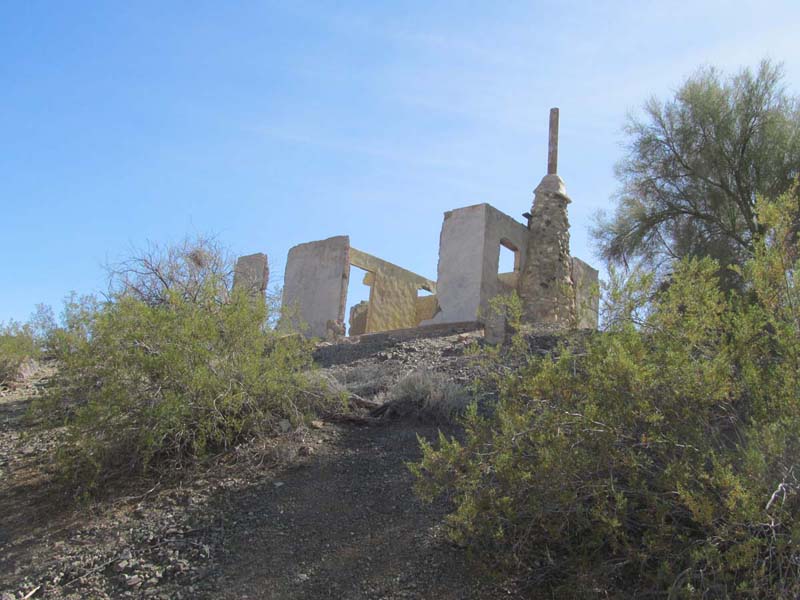
Many years ago, the former town of Planet existed here and was a regular stopping off place for travelers. It featured a post office and other amenities of a small town but now it is a ghost town with foundations remaining here and there. Here is all that remains of the post office.

Copper-laced iron formation outcrops in a number of places here and there on the mountainside. Here is Paul checking out one particularly good outcrop.
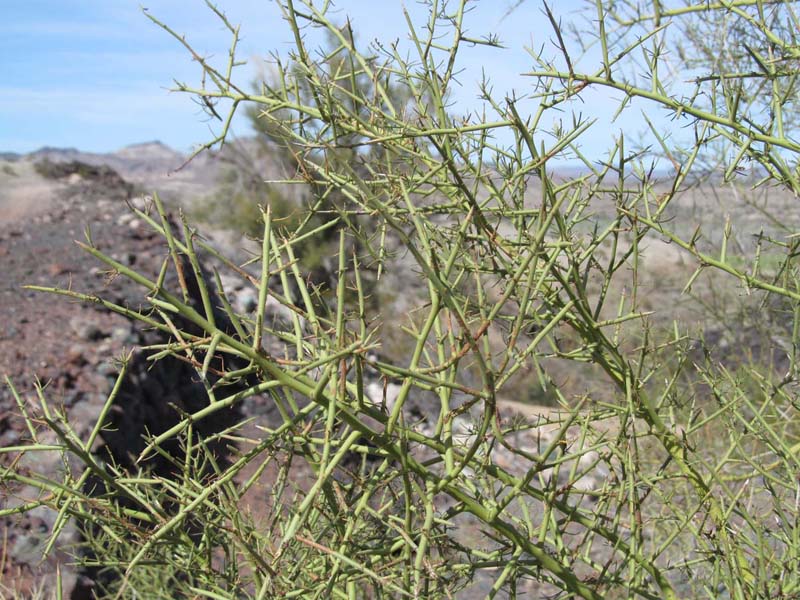
One of the more common plants in the Sonoran Desert, around the mine is the Paulo Verde. Mean-looking thorns on green branches!
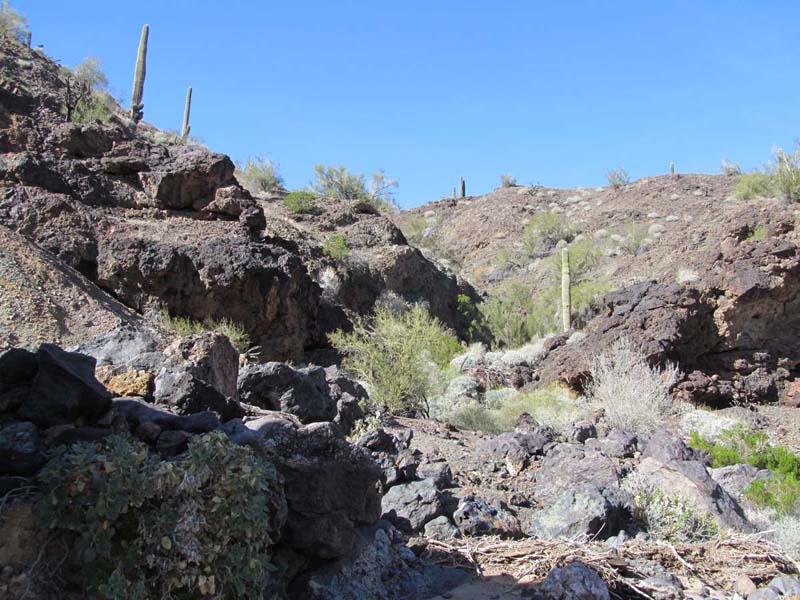
One of the other prominent plants in the vicinity of the mine is the saguaro cactus. Lots of them!
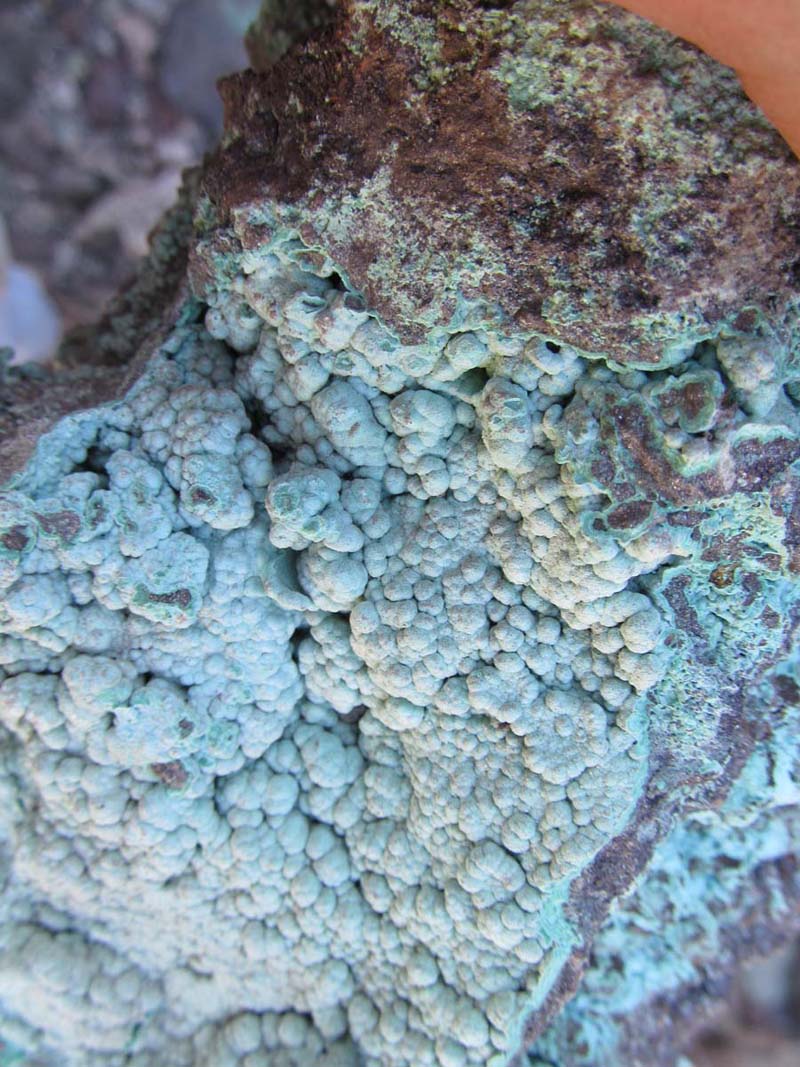
There was a lot of this botryoidal mineral around. I am assuming that it is chrysocolla or a mixture of copper minerals. View about 15.0cm across.
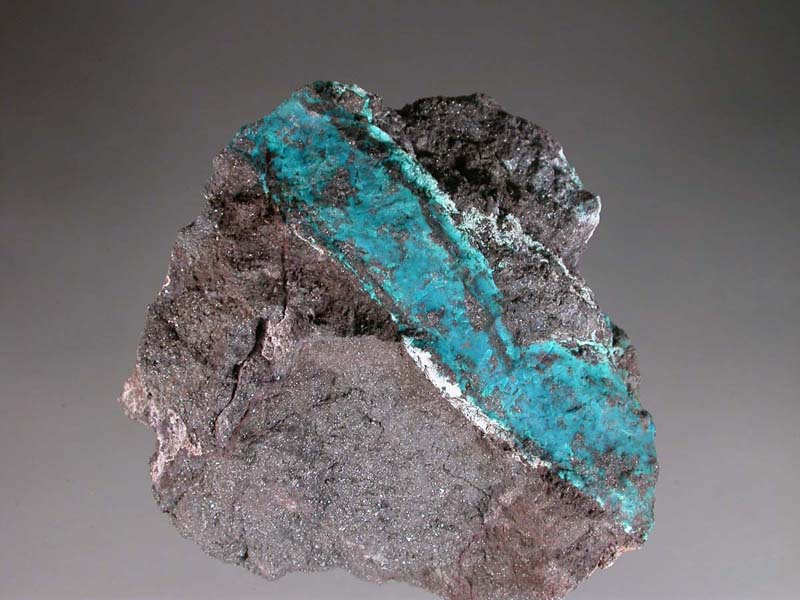
Here is a rather excellent specimen of a thick vein of fluorescent blue chrysocolla cutting specular hematite. Paul collected this specimen not on this trip but and earlier one. When people look at it, they invariable ask me if the blue has been "painted on", it is such an UNREAL colour. 13.0cm across.

It was not hard to find seams of malachite that often enlarged into openings that hosted tufts of malachite needles. I'd like to try and find a really nice specimen of this mineral there.
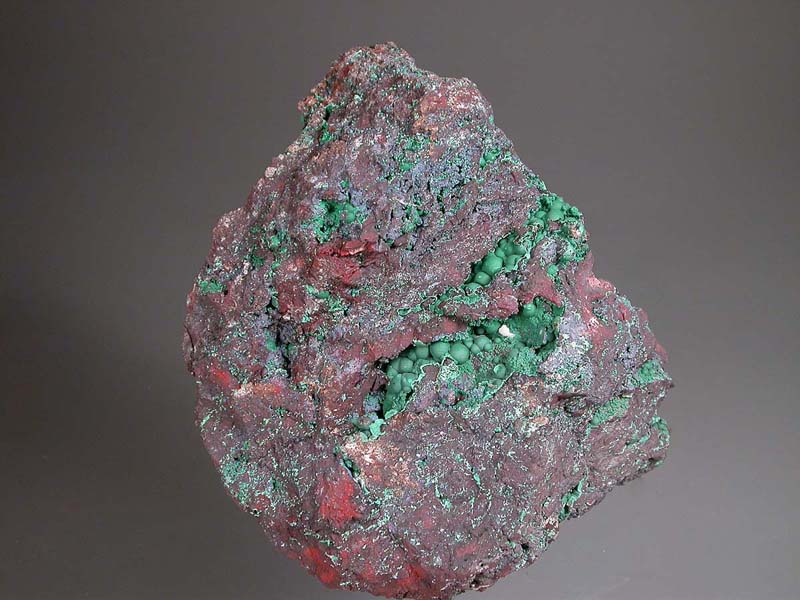
The other form of malachite at the Planet Mine is the botryoidal habit. It seemed to me that there was a fair bit of this material and, if one was persistent, it could be possible to find a nice specimen. This one isn't bad but I think that bigger and better probably exists! It is 9.0cm across

Here is a close-up of part of the vug in the malachite specimen. For me, it is pretty cool to be collecting mineralization like this since we have very little like this in Canada. "Damn the Glaciers" that scraped it all away!
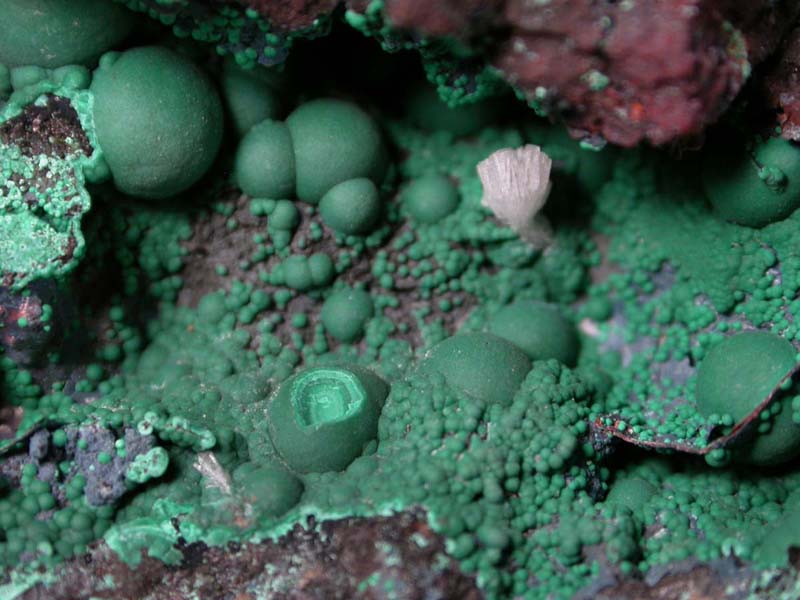
This portion of the vug has nice malachite plus a crystal of a white mineral that resembles hemimorphite. Not sure though. Field of view about 20mm across.